| FIMER Australia | |||
|---|---|---|---|
 |
 |
 |
 |
| FIMER for home | FIMER for business | FIMER for installers | About FIMER Australia |
Your EV Charging 101 Guide: Everything you need to know about charging an Electric Vehicle
From their cost efficiency to minimised carbon footprint, Electric vehicles (EVs) have the ability to change the dynamics of travelling completely. Though Australia is only starting to pick up its pace compared to America, China, or Europe, it's slowly getting up to speed and is catching other developed nations.
However, range anxiety is one of the biggest concerns from research conducted in 2021 by the Electric Vehicles Council of Australia and Car Sales, which has slowed the pace of EV adoption in Australia.
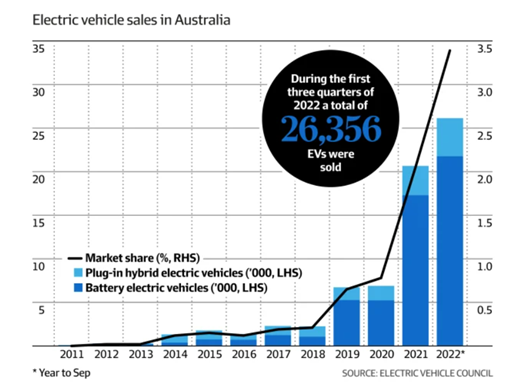
Range anxiety, in simple terms, is the driving range you have between charges. And rightfully, people had to worry about EV charging stations when electric vehicles had smaller batteries and limited places to charge.
However, the dynamics have changed dramatically, and to understand things better, let's start from the basics. This guide will answer the following questions:
What is EV charging?
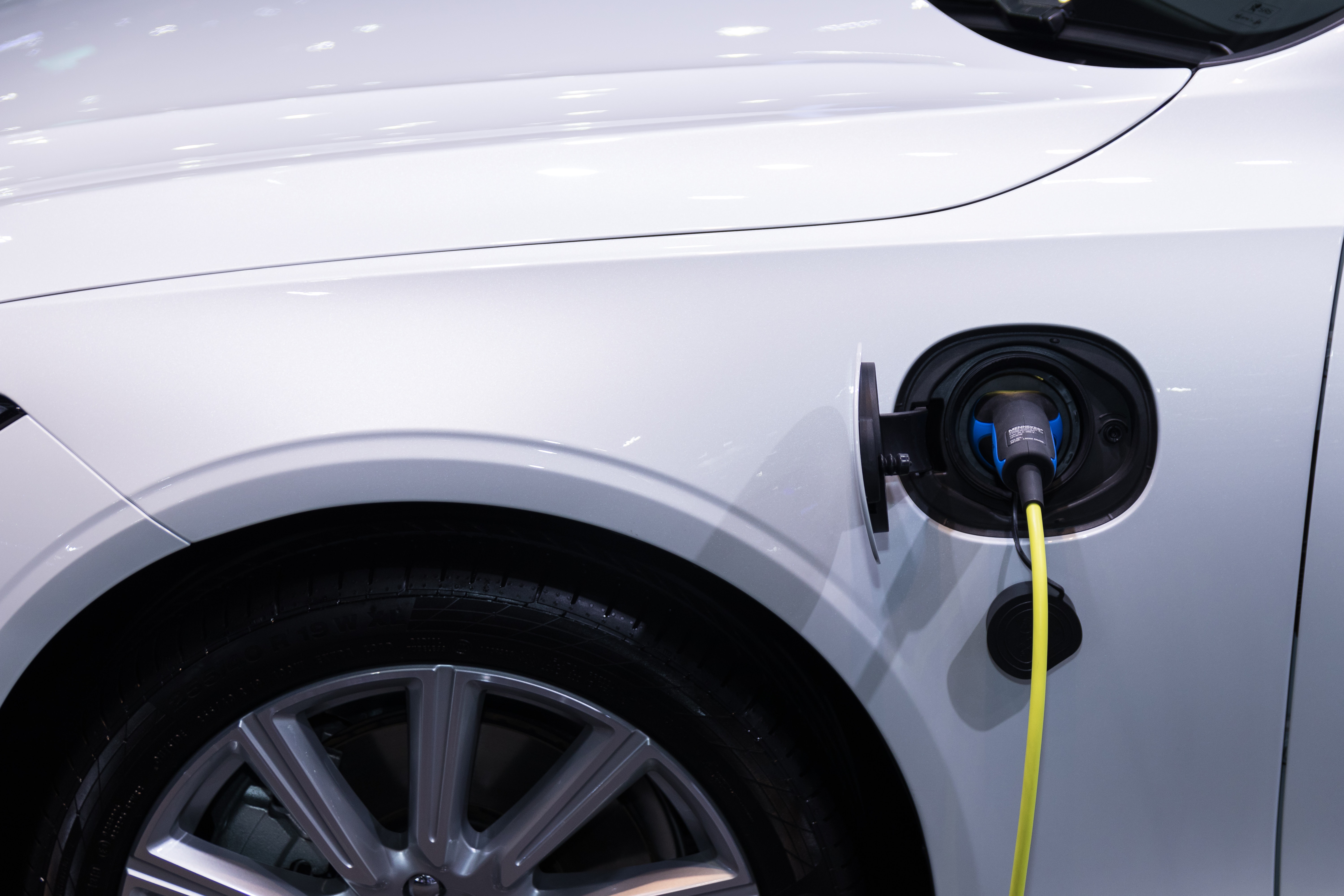
Just like you plug in your phone to charge it, electric vehicles must also be plugged in to charge the car's battery.
Your electric vehicle can technically be charged anywhere with a power point.
However, the safety, time and speed taken to charge your vehicle will depend on the type of EV charging solution selected. Read below to learn more about types of chargers.
What are the types of EV charging stations?
Electric vehicle chargers are divided into three levels: slow, medium, and fast.
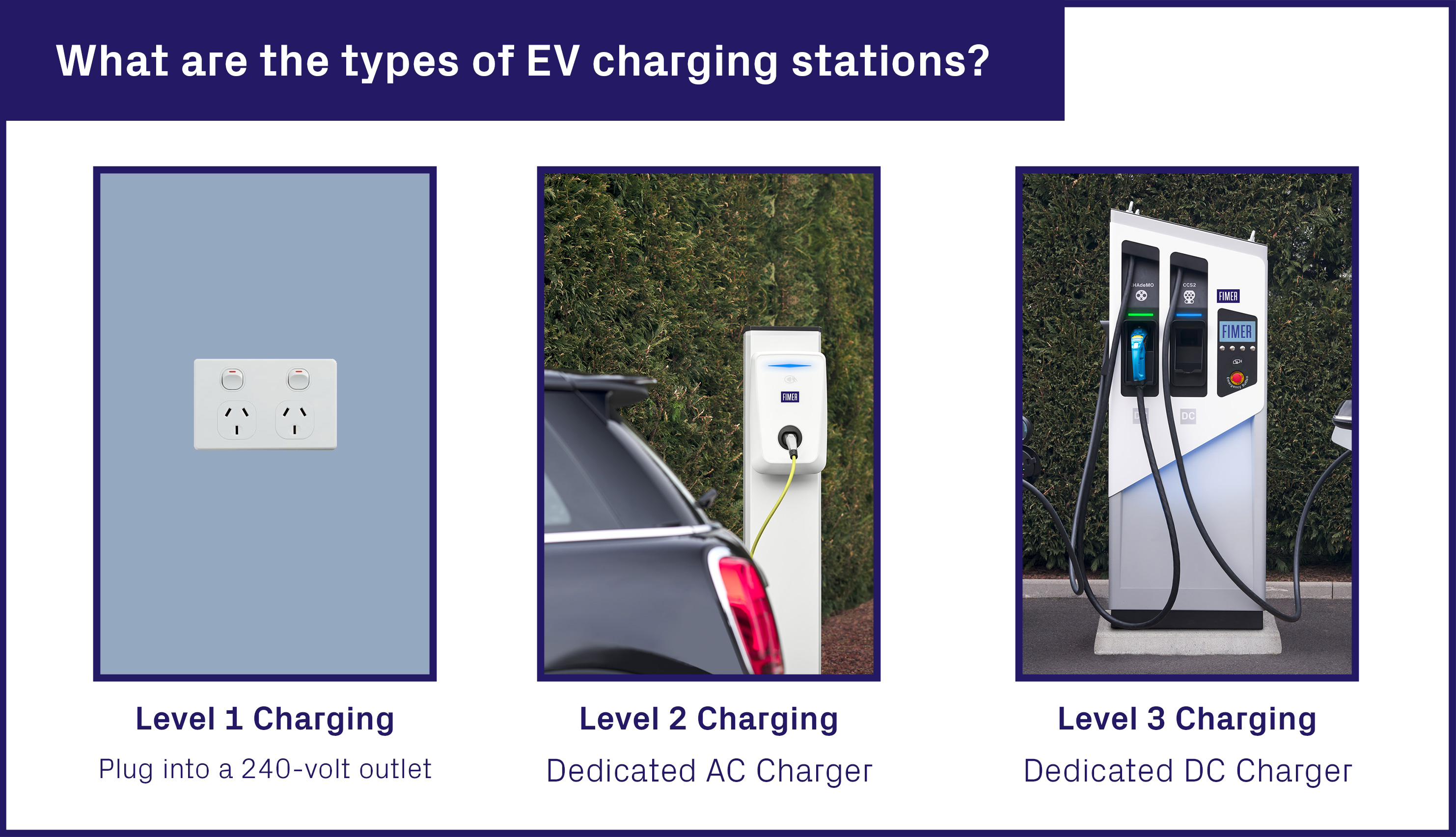
Level 1
Level 1 EV charger is like plugging your car into a regular 240-volt outlet and charging your EV. It's a very slow process to charge your vehicle via this method. It can take over 48 hours to fully charge your vehicle from empty. There are risks to charging via this method; an article on The Driven covers this well.
Level 2
Most residential houses, apartments, offices, and many public chargers will use dedicated Alternate Current (AC) EV charging stations or Level 2 chargers. These chargers are perfect where you plan to leave the car for a few hours. They can be mounted on a wall or be free-standing and is either an AC single-phase or AC three-phase connection.
The Level 2 EV charger is much better and faster than the Level 1 slow charger. It is also safer as it is installed for the purpose of charging a vehicle and won't trip the home's electricity. It takes about 6 to 10 hours, depending on your vehicle, battery usage, charging outlet, and other criteria.
These are perfect for the home or workplace or for "top-up charging" on the go. FIMER offers two Italian-made Level 2 chargers, the FIMER FLEXA AC Wallbox and the FIMER FLEXA AC Station.
Level 3
Level 3 EV chargers are fast high voltage Direct Current (DC) chargers normally found in public, such as petrol stations, highways and shopping centres. They offer power ranges from 50kW to 350kW and can charge your vehicle in less than an hour, sometimes within 15 minutes.
These chargers are perfect for when you are doing a lot of driving and need to charge your car quickly to get back on the road. I.e. on a road trip. FIMER's ELECTRA DC Station is a perfect solution for fast charging.
How do electric vehicles charge?
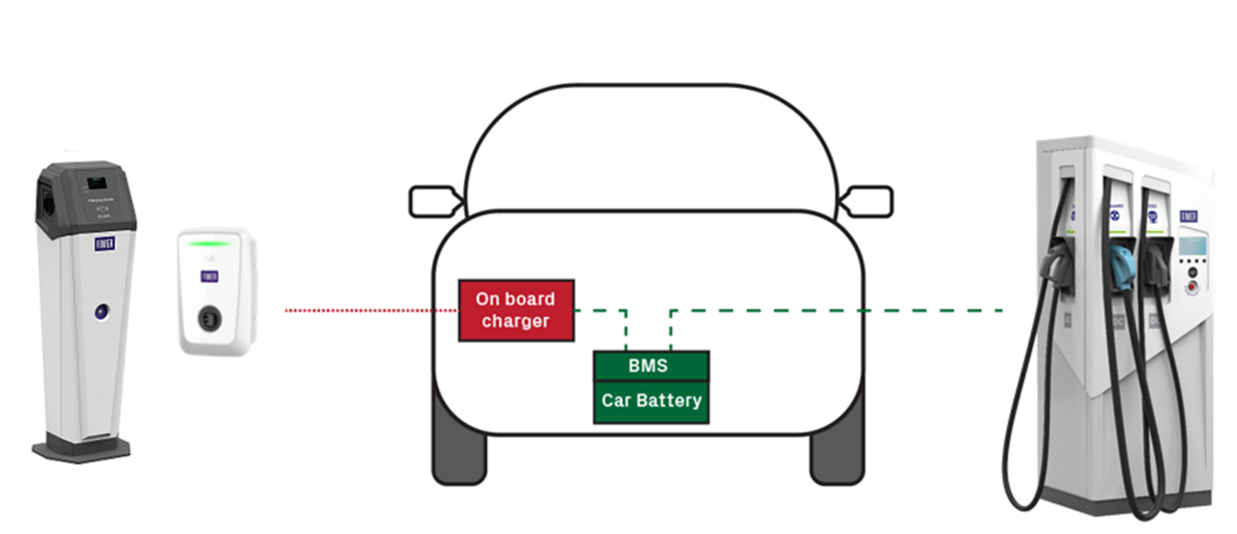
There are two types of currents that were mentioned earlier. Alternating Current (AC) flows periodically, and Direct Current (DC) flows in a straight line.
Without getting too technical, it's best to understand that all EV batteries store and use DC power.
Whether your electric vehicle is charged using an AC or DC charging station, it will ultimately store it as DC power. This means charging through a DC charging station takes less time to charge your Electric vehicle.
With an AC charging station, there is an extra step where the electricity must be converted to DC, which takes more time.
Home charging vs Public EV charging station
The speed and the time taken to charge your EV highly depend on the charging station you charge at and the vehicle you have. For example, let's look at charging at home with an EV AC charging station vs. charging at a public EV DC charging station.
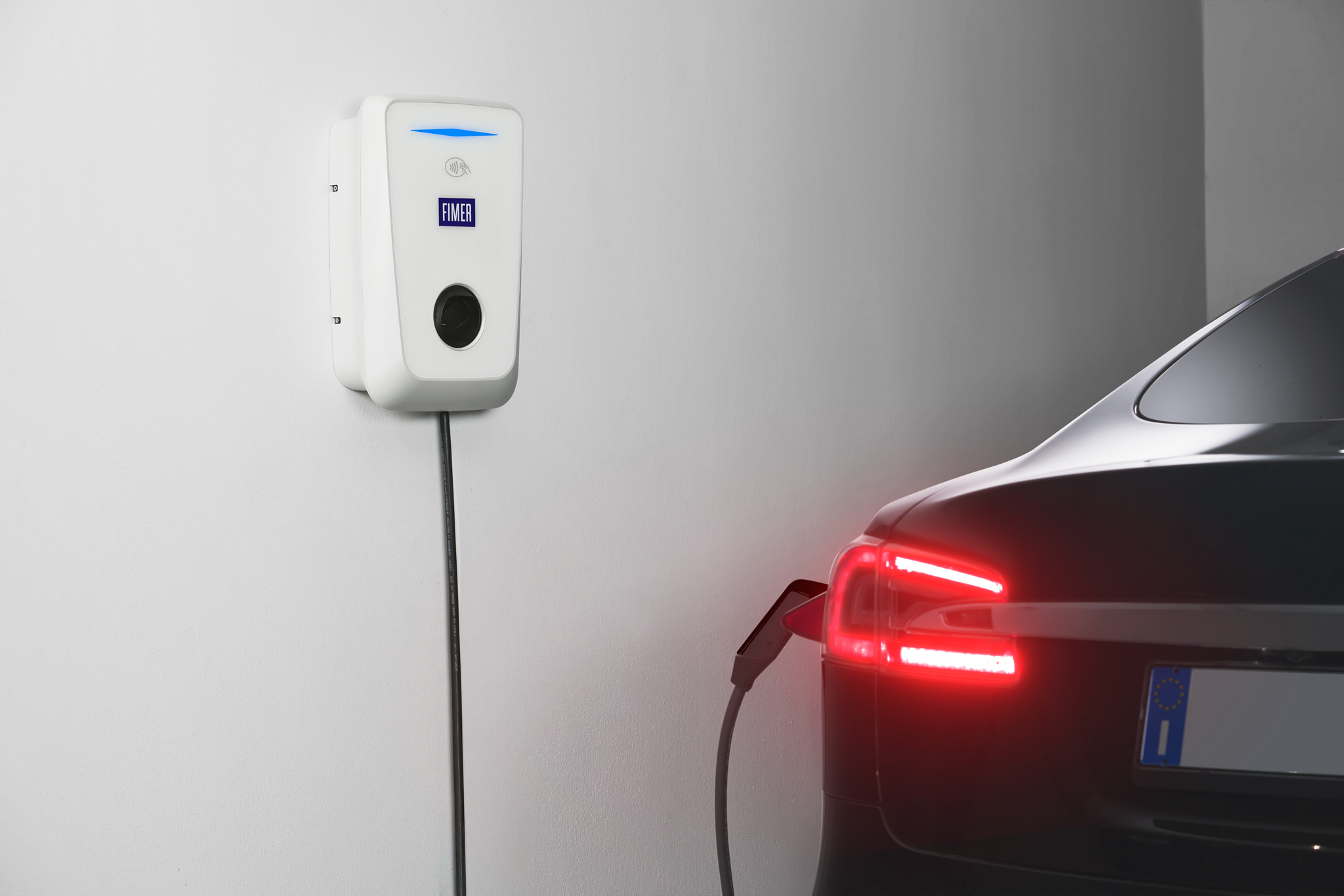
Charging your EV at home
Most EV owners prefer having a home EV charging outlet as they can plug it in overnight and use their car the next day for their daily needs. It will generally be an AC wallbox charger, a wall-mounted unit. These charging units are specifically designed for electric vehicles and residential purposes, keeping safety, efficiency, and user-friendliness in mind.
FIMER offers the FIMER FLEXA AC Wallbox charging solution. There are several different versions to suit your requirements. Click here to learn more.
Public Charging EV stations
As Australia continues to see growth in EV ownership, public charging infrastructure is critical to ensure a smooth transition to a fully electric future.
Governments at all levels and businesses are investing in public EV charging stations to support this transition.
From shopping centres to petrol stations, offices, and highways, the number of EV charging stations has increased thanks to the ever-growing network of electric vehicles.
You will come across both AC and DC charging stations across Australia. AC chargers are generally easier and more affordable to install and maintain, whereas DC stations require much more planning.
DC charging stations are prominently installed in high-traffic areas (highways, petrol stations). They are fast, quick, and easy to use.
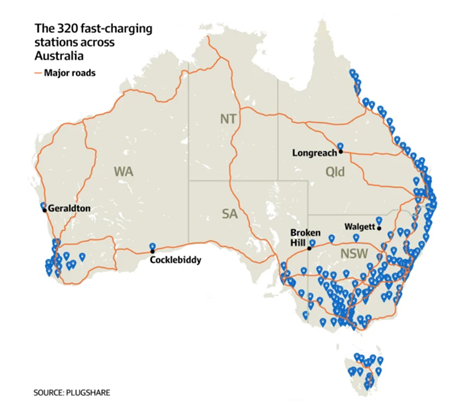
The FIMER ELECTRA DC station is a new generation station that offers total charging power from 60 kW to 150 kW and can charge three vehicles simultaneously, two via DC fast charging (CSS2 or CHAdeMO), one with an AC Type 2 charging cable. If you want to learn more about FIMER ELECTRA DC Station, click here.
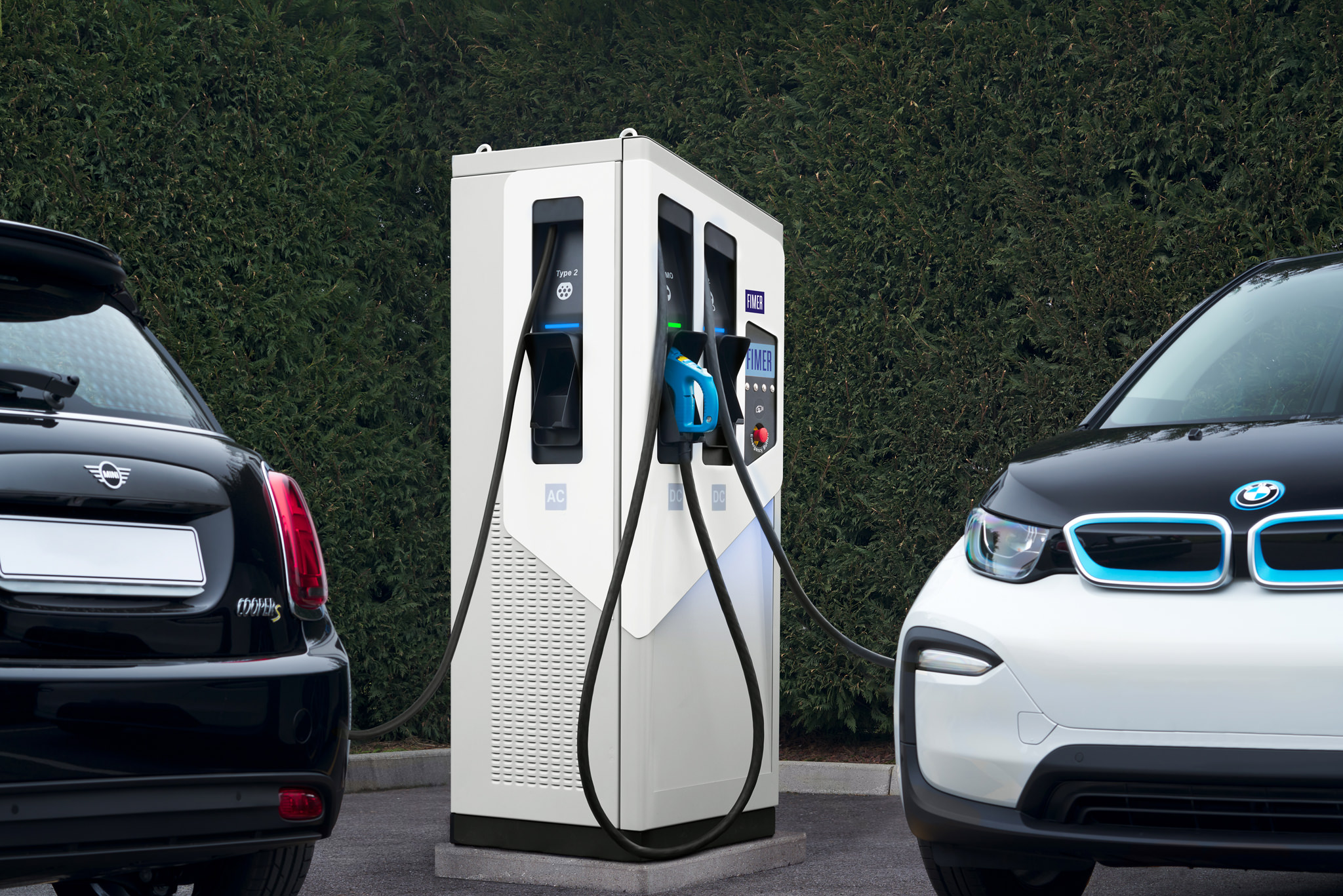
Misconceptions and myths about EV charging systems
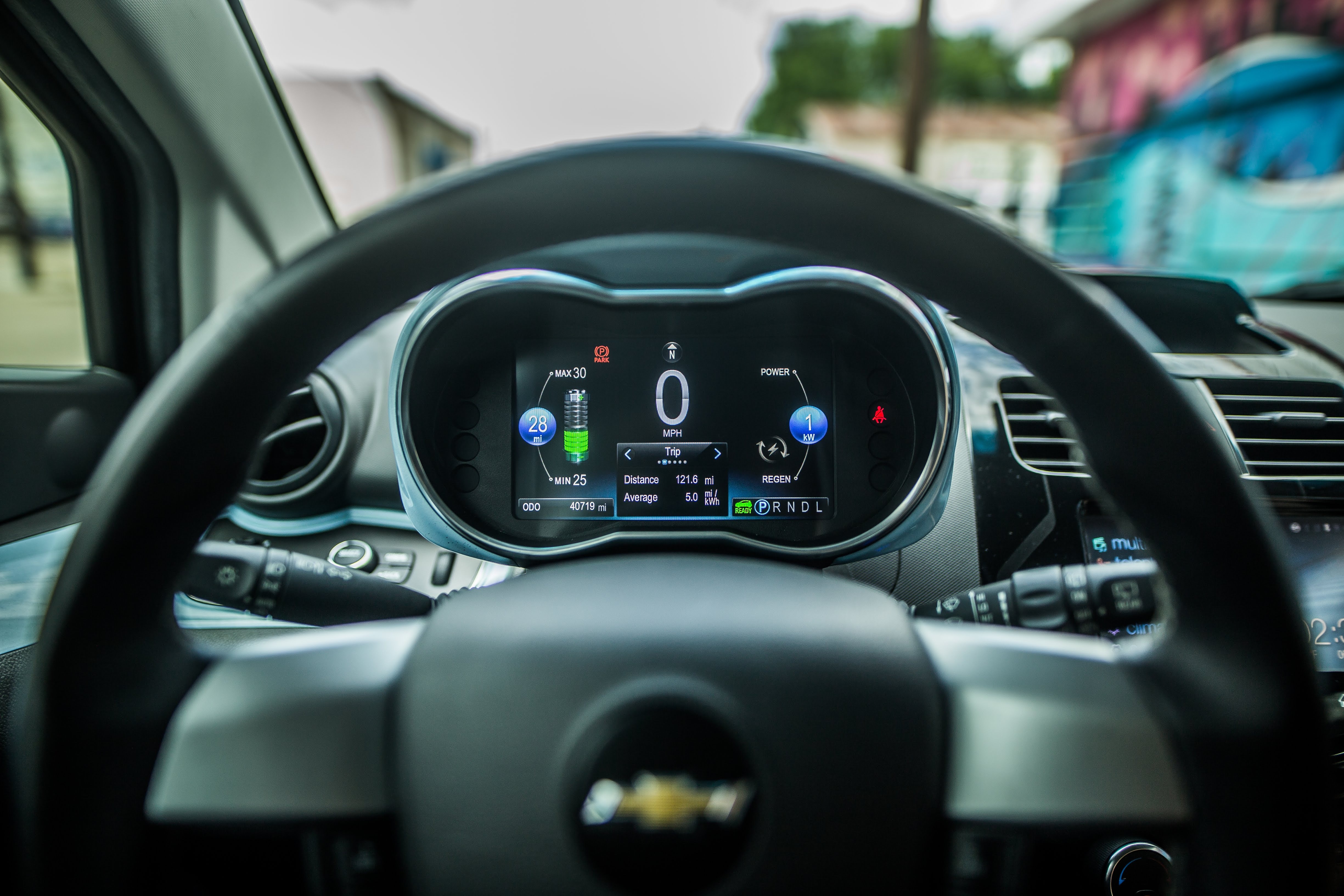 One of the biggest misconceptions surrounding EV chargers is the fear of waiting a long time to charge their vehicle compared to the time to refuel their Internal Combustion Engine (ICE) or Vehicle with petrol. This also ties into people's range anxiety, the fear of your car battery going flat before you can get to a charger.
One of the biggest misconceptions surrounding EV chargers is the fear of waiting a long time to charge their vehicle compared to the time to refuel their Internal Combustion Engine (ICE) or Vehicle with petrol. This also ties into people's range anxiety, the fear of your car battery going flat before you can get to a charger.
If you stop to charge your vehicle when out and about, you will be waiting longer to charge your vehicle. However, in most cases, you won't charge the vehicle 100%. You will have a "top-up charge" until you can get home to charge your vehicle overnight.
The average Australian drives approximately 38km a day, with current EVs having a battery range of 480-550km. This is more than enough to meet the needs of the average Australian's daily/weekly range requirements.
If you are going on a road trip from Brisbane to Sydney, around a 900km journey, non-stop, will take about 9 hours and 40 minutes. You will have to stop and charge along the route (one, maybe two times). This charging time will give you an opportunity to eat, grab a coffee, go to the bathroom, and recharge yourself before getting back on the road. The places you stop along the highway will have multiple DC fast chargers available, and you will be back on the road within 20-40 minutes.
Or alternatively, have a pit stop and stay overnight somewhere, and your vehicle can charge overnight using AC power.
Australia's charging infrastructure is growing daily in metro, regional and remote Australia. There is no need for range anxiety anymore.
Are Electric Vehicles worth the money?
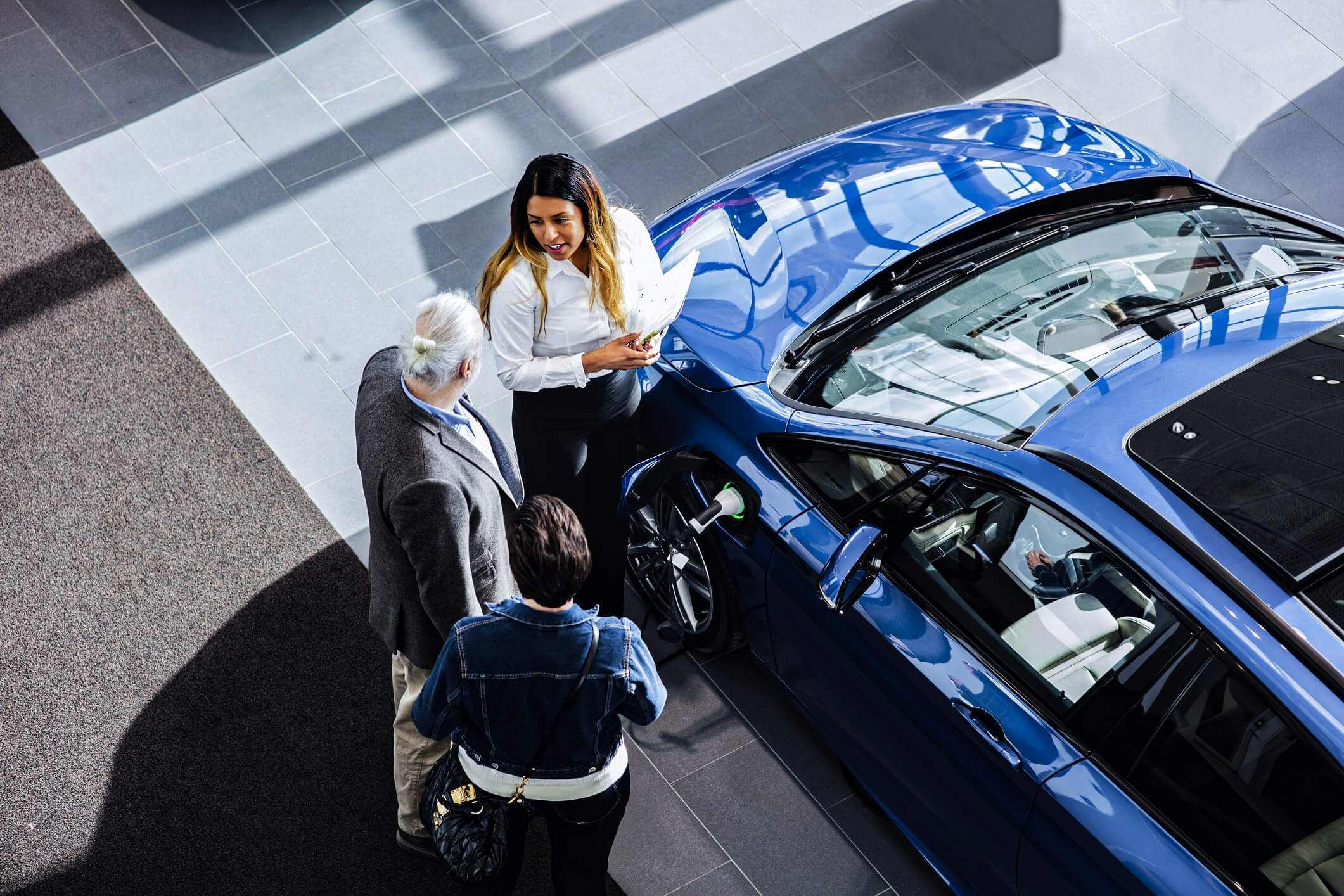 Cars can either be a necessity or a luxury. Nonetheless, both ICE vehicles and EVs are an investment.
Cars can either be a necessity or a luxury. Nonetheless, both ICE vehicles and EVs are an investment.
Although, EVs a generally more expensive than traditional ICE vehicles (although more affordable models are becoming available in Australia). The savings of driving an EV comes from the long-term costs, with lower "fuelling" and maintenance costs. Plus, knowing you are reducing your carbon footprint.
The Driven wrote a detailed article about the cost differences here.
You can also calculate your own cost comparison with help from Evenergi's comparison calculator.
How to get started with EV charging?
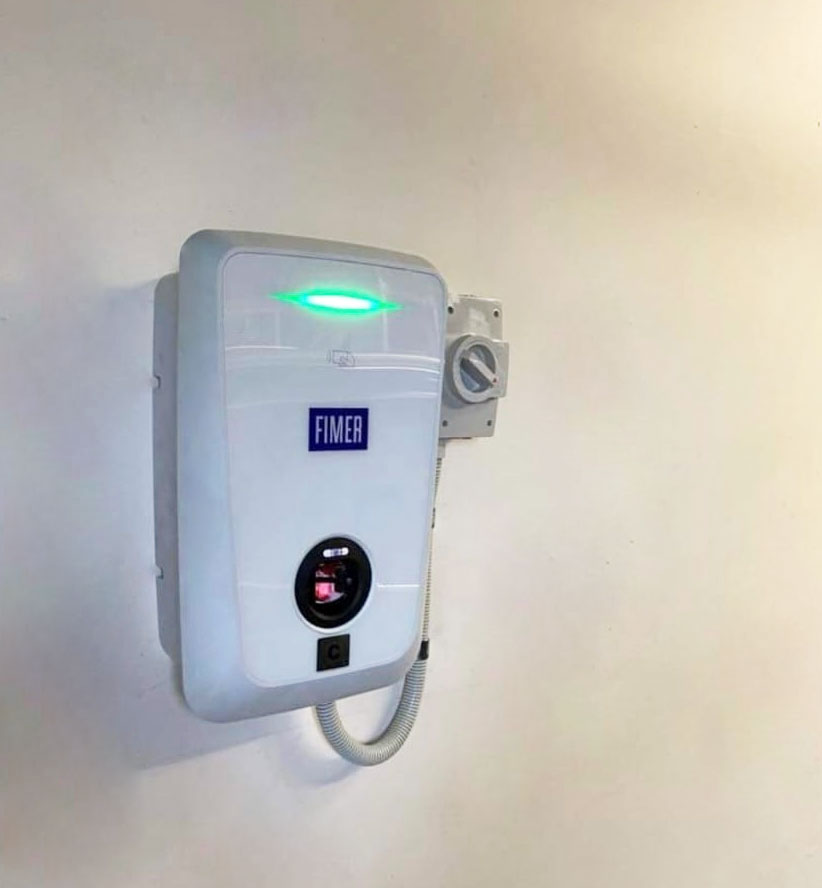
It can be overwhelming to choose among the various brands. It would be best to contact an EV charging specialist, installer, or electrician to understand what type of EV charger will suit your needs and budget.
FIMER has a range of certified installers that you can choose from your neighbourhood to get your electrification journey started. Find one here.